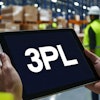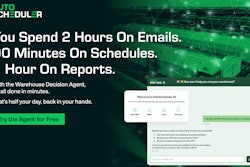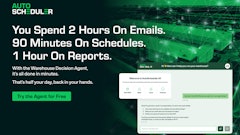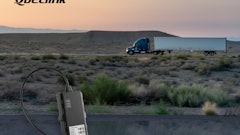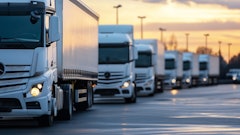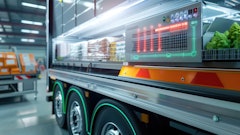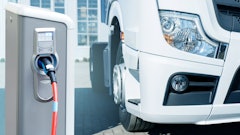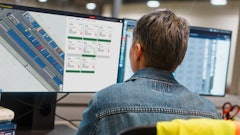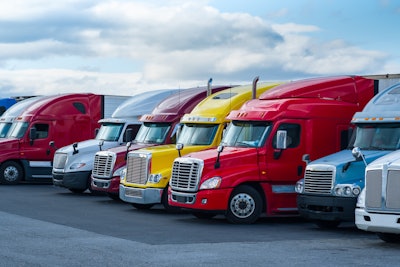
The latest PwC Global Workforce Hopes and Fears Survey paints the picture of a workforce that is open to the future and new ways of working, however, present-day pressures are clouding their perceived optimism toward change. This juxtaposition needs to be balanced with leaders trying to keep their companies economically viable over the long term, especially in the face of immense competition and technological evolution. To meet the new expectations of today’s workers, some food and beverage organizations are evolving the makeup of their fleet. This means when appropriate, companies are transitioning to a future fleet where personal assets are used, and employees are reimbursed for this utilization.
From a business standpoint, it makes sense. As technology becomes increasingly important across all aspects of our lives, those who drive for work will increasingly expect their employers to provide modern technological tools that enhance their experience. According to Pew Research Center, nine in 10 Americans now own a smartphone.
When thinking about recruiting and retaining drivers, a specific area long overdue for an update is vehicle management systems. Legacy systems tend to require more manual inputs and management through tools like logbooks, which adds administrative work to employees’ already full plates. More modern, scalable technology driven by artificial intelligence (AI) on devices like smartphones and touch screens, are easier to use and can streamline mileage reporting and provide accurate, timely reimbursements.
Using the right tools for the job
To stay competitive in the AI era and to keep the workforce robust, businesses need to find new ways to implement vehicle reimbursement technology to streamline operations, cut costs, and make drivers’ lives much easier. Adding to the specific benefits like precise mileage reporting and fast reimbursements for employees mentioned above, new solutions can give business leaders tools to make better decisions. This is done by supporting compliance, identifying cost-saving opportunities, and preparing in-depth workforce insights. Solutions can even provide additional risk mitigation resources like tracking insurance to confirm employee coverage, monitoring motor vehicle records to verify employee eligibility to drive, among supplying other training tools to promote driver safety.
Tips for hitting the gas
When shifting to new vehicle management technology, especially amongst diverse, multigenerational teams (there are now five generations in the workforce), here are a few best practices to keep in mind:
1. Communicate clearly and often about the change. Honesty is always the best approach and there are meaningful ways to discuss the need for more efficiency, stronger compliance, new growth goals, or whatever reason is driving the switch in fleet reimbursement technology. Stating why the company is implementing it and how it will improve workers’ days will help everyone understand and appreciate the intention behind the move. Often, there will be different methods that resonate with a range of workers, so tailor the communication to your employee set – think about tools like emails, town-hall meetings, executive videos, ongoing training.
2. Speaking of training, start this early to boost retention. From an HR perspective, a lot can be said about a candidates’ comfort with technology during the recruitment process – do potential hires use email and web-based contacts? Did the inquiry come in via online job search? The latest technology training should then be part of the onboarding process for new hires, so adoption is imminent. For existing employees, it is all about adapting to the needs of the workforce. Hands-on training tends to allow workers to be immediately engaged and practice the new process from the get-go. Though documentation is important for future reference, make sure interactive training is a big part of the arsenal.
3. Ensure there is an iterative rollout plan to streamline reimbursements. Create a process of continuous feedback, to listen to and adapt to drivers’ needs. For example, if workers are spending too much time on log work, it can help a business identify if more training is needed. Another very effective approach is to pair new hires with peers that have been with the company and/or have more experience with the technology. Instead of only addressing from the top-down, this style of training can foster more comfort and better overall acceptance.
Driving meaningful change
Optimizing overall budgets can be a very complicated process. By committing to a thorough understanding of company goals and employee capability, food and beverage fleets can be improved to better manage spending, mitigate risks, and streamline reimbursements to employees driving for work. A more modern, scalable system will create opportunities for growth and help drive retention in a very competitive market. Upgrading from outdated legacy systems is critical for maintaining a competitive edge. In today’s fast-paced market, staying ahead requires more than just efficiency; it demands the ability to make smarter, data-driven decisions that can anticipate challenges and optimize performance.
Modern systems not only automate and streamline operations but also provide real-time insights and predictive analytics that empower companies to adapt quickly to changing conditions. This level of agility helps businesses identify new growth opportunities and respond swiftly to market demands. By enhancing operational efficiency and offering predictive maintenance, these systems improve vehicle and driver retention, critical for long-term success in a fiercely competitive landscape.
